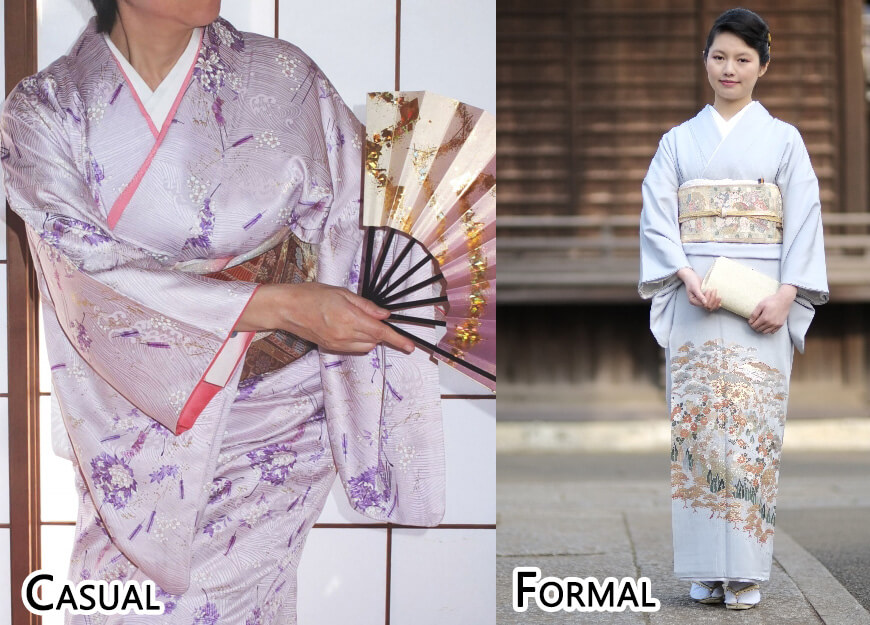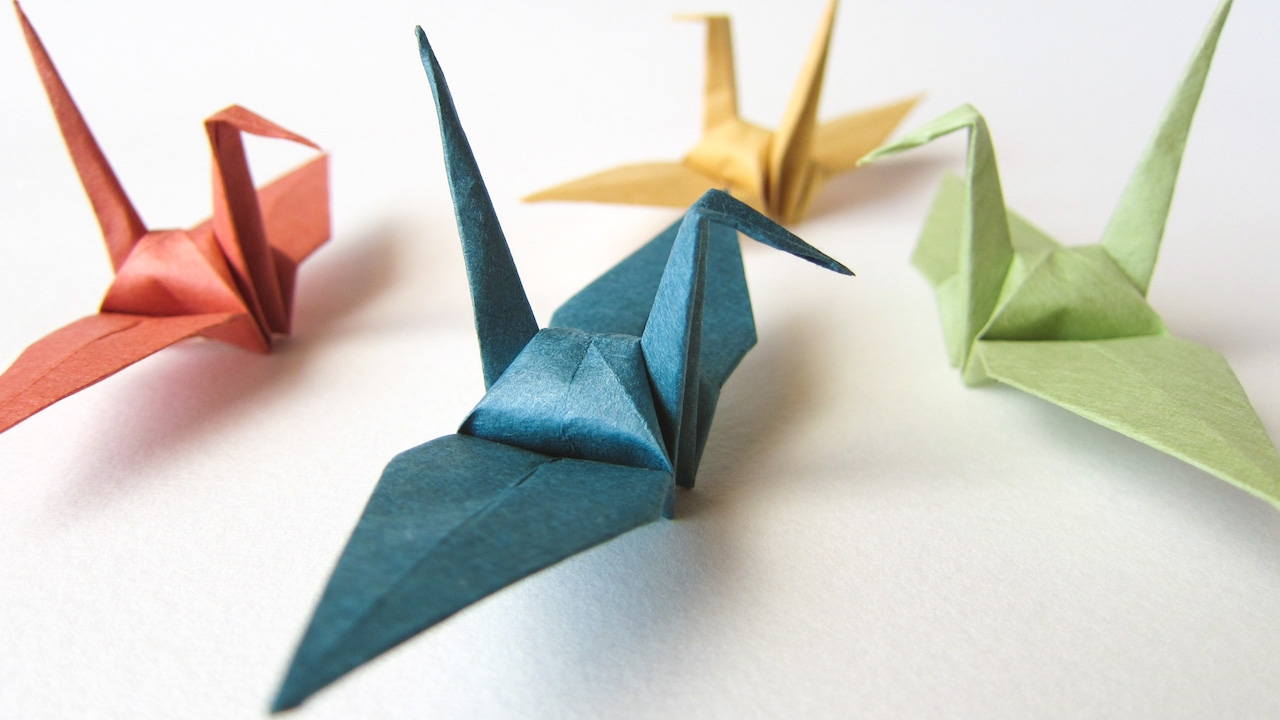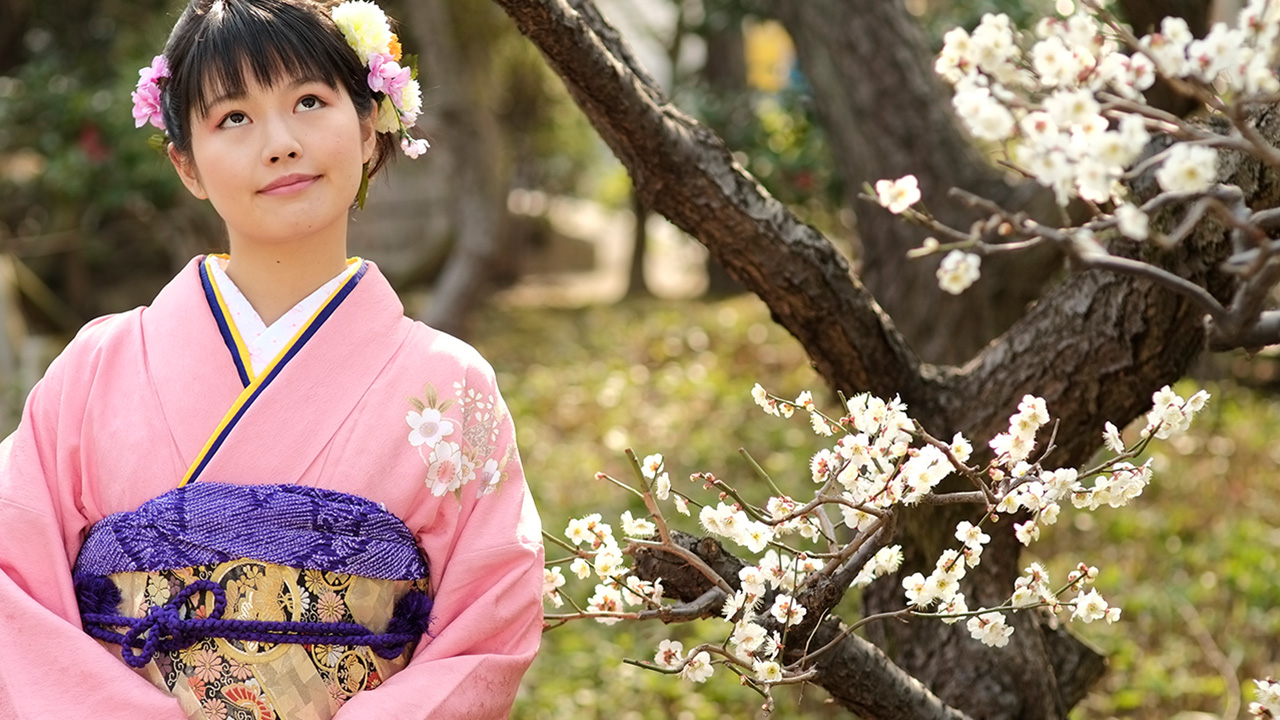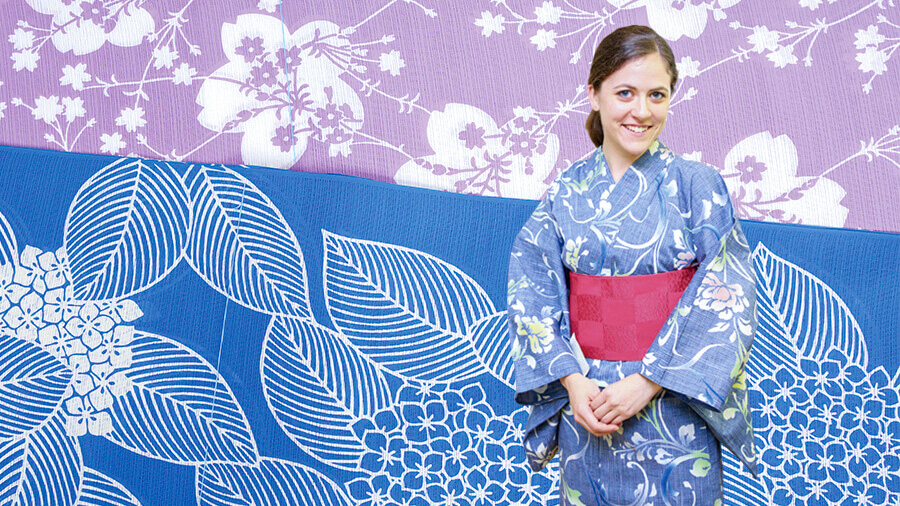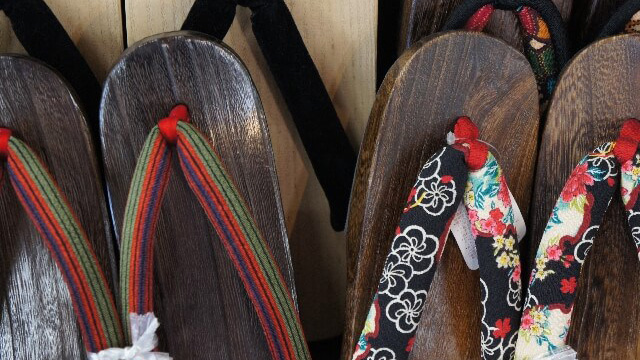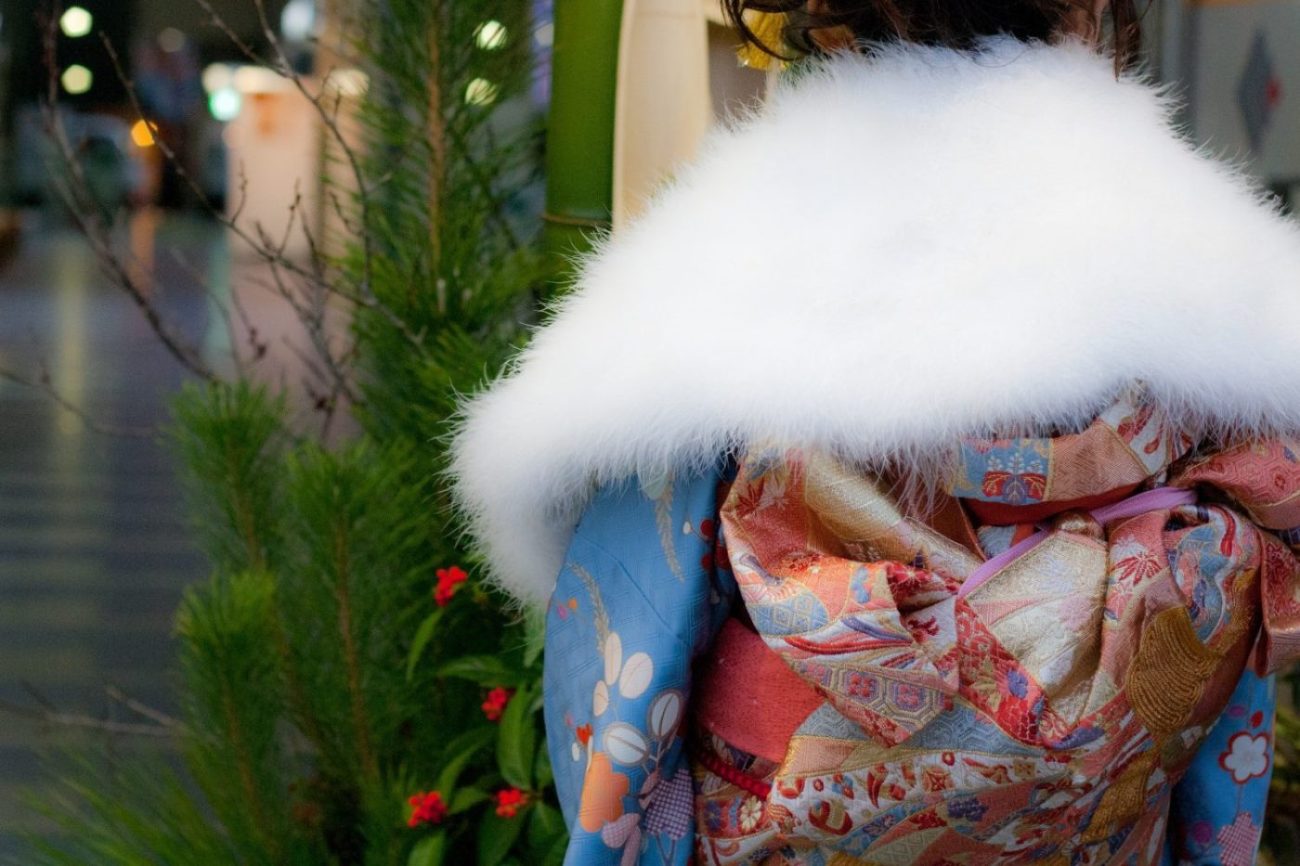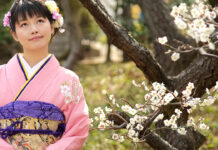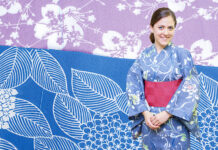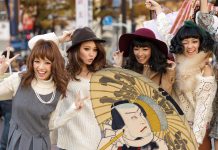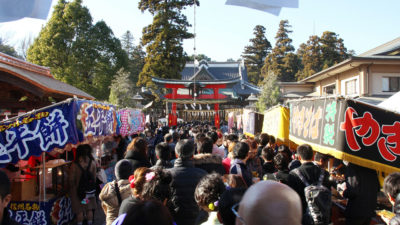Even putting on a Japanese kimono properly can be a difficult, but the challenge doesn’t stop there! There is a list of rules concerning the kimono once you are wearing this traditional Japanese wear. That being said, these rules have become more like guidelines nowadays, making way for creative freedom. If you do want to know and follow them you can study Kitsuke, the art of kimono dressing.
Before even getting into the rules, you may want to familiarize yourself with the many different kimono types by reading our informative article “Know Your Kimono: 9 Different Kimono Types”.
Once you know the basics, let’s get into the rules of wearing a kimono! We won’t list them all, but here are some useful pointers on how to wear the kimono correctly.
Kimono Rule #1: Left over Right
For both the nagajuban (kimono underwear) and the kimono there is one important rule. Always wear the left side over the right side. Only dead people have their kimono worn right over left. So unless you are at your own funeral, remember this basic but important rule for wearing a kimono! A useful and amuzing memory aid for this rule is the phrase “leftover rice”.
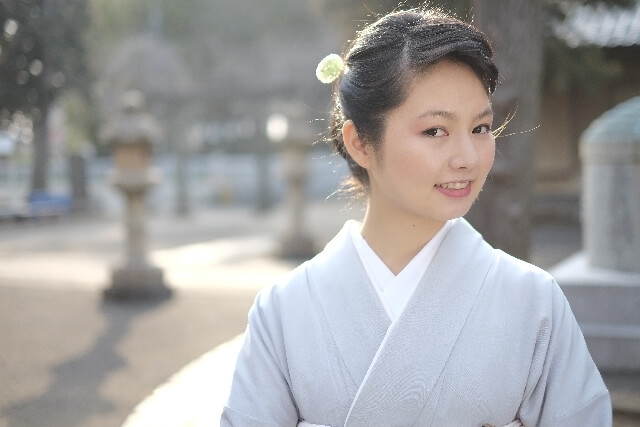
Kimono Rule #2: Kimono Collar Position
The collar of your kimono needs to be firm and show the back of your neck. There should be an opening of about a fist-and-a-half in width. Young people are supposed to show of their neck and keep their collar in the front high and tight. Older women show less of their back and their front collar is lower and more rounded.
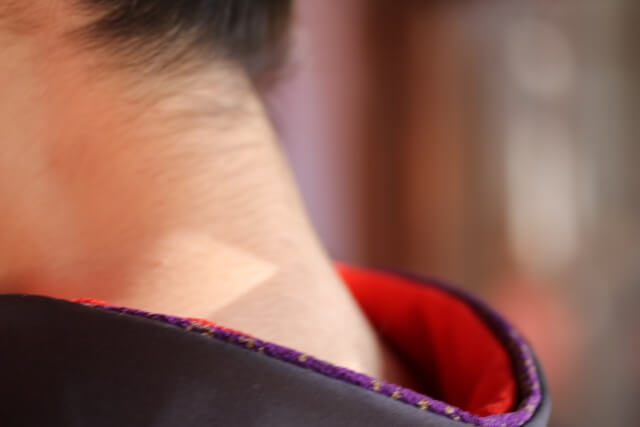
Kimono Rule #3: Be Seasonal!
Japanese people are very much in touch with the seasons, and so is the kimono. Certain colors and patterns can only be worn during a specific time of the year. For example, any kimono or obi with a sakura tree on it can only be worn during the sakura blooming season. However, single sakura flowers without a tree are acceptable all year round. If you think about it it’s not difficult to keep your kimono in touch with the seasons. For autumn, leaves and colors such as brown, red and dark green are very fitting. For winter darker colors such as red and black, spring brings to mind pink and flowers and summer needs bright colors such as blue and yellow.
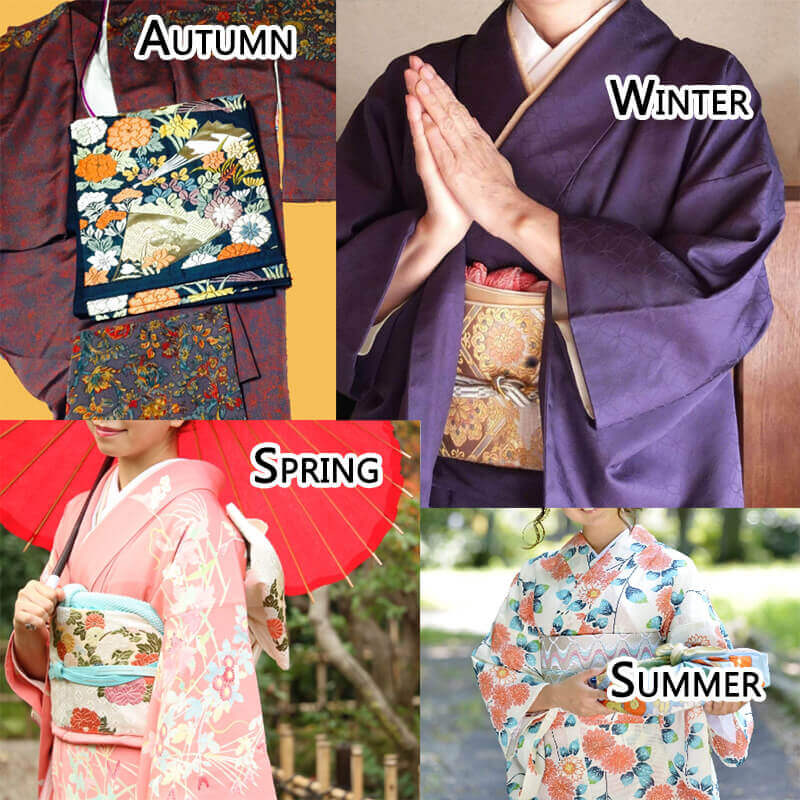
Kimono Rule #4: Keep it parallel to the ground
Kimonos are worn so that you have a tube-shaped body. If your body is not naturally like this, padding must be worn to change your shape. A kimono is a very symmetrical garment; the seams need to be aligned and the bottom of the kimono needs to be parallel to the ground. Doing this is more difficult than it sounds and it requires some dressing practice before getting it right.
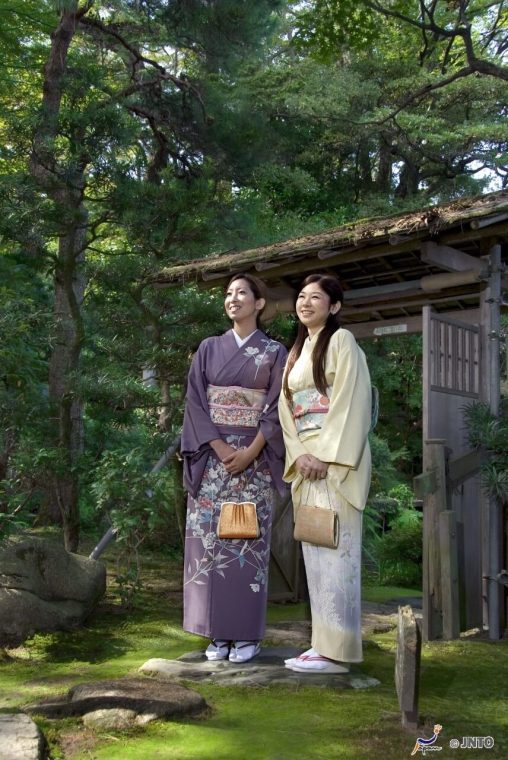
Kimono Rule #5: Formal vs Casual Kimono
There are two ways to wear a kimono; formal and casual. This goes back to the kimono types where we’ve also looked at the formality of kimonos. A general rule of thumb is;
- Does it have gold/embroidery/silk/shiny fabric? Is the pattern only visible on certain parts of the kimono? -> It’s probably a formal kimono.
- Is the kimono made of cotton? Does the pattern repeat itself? Are there no embroidery or shiny parts? -> It’s probably a casual kimono.
Kimono Rule #6 Always wear your obi on the back
This might seem like a basic rule but obis were worn on the front by women who worked in the red-light-district. So make sure to always wear your obi on your back!
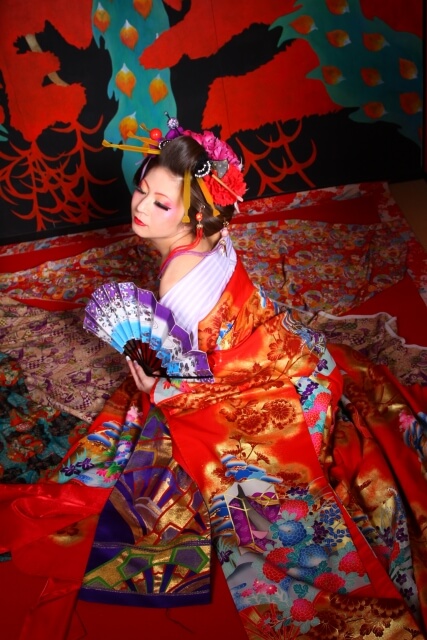
Now that you know how to wear a kimono, learn the manners for wearing a kimono.
Other kimono articles recommended for you
WATTENTION NINJA WRITER PROFILE
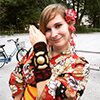
From popular culture to traditional culture, I’ve immersed myself in both. I love writing about tradition, history and sharing fun discoveries. If I’m not outside watching a festival parade I’m leisurely reading manga in kimono.
 0
0

